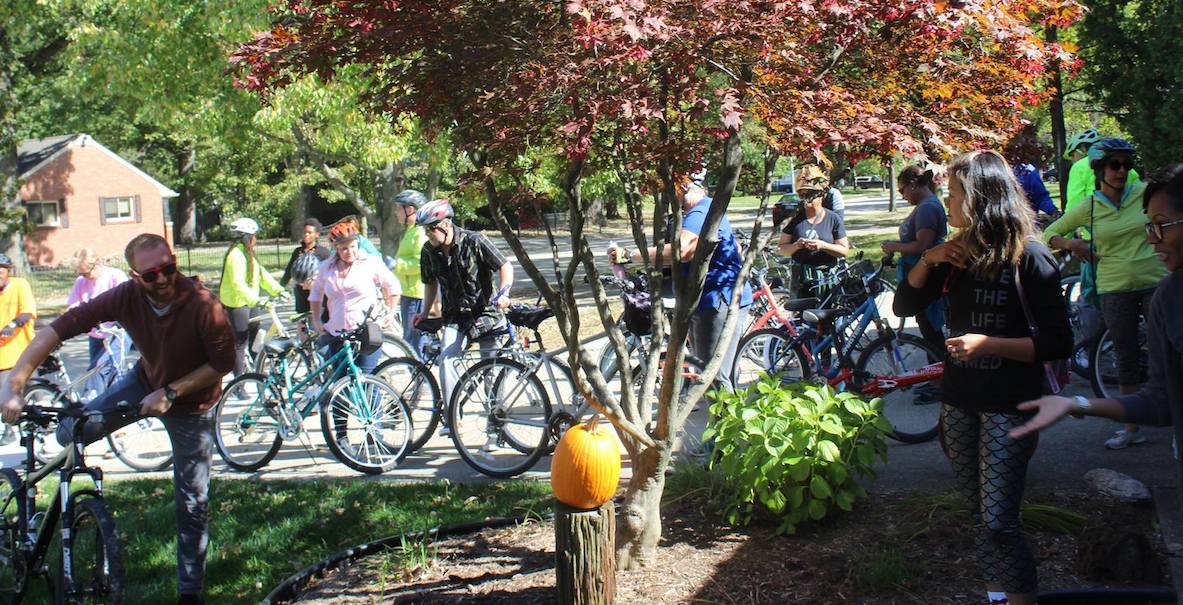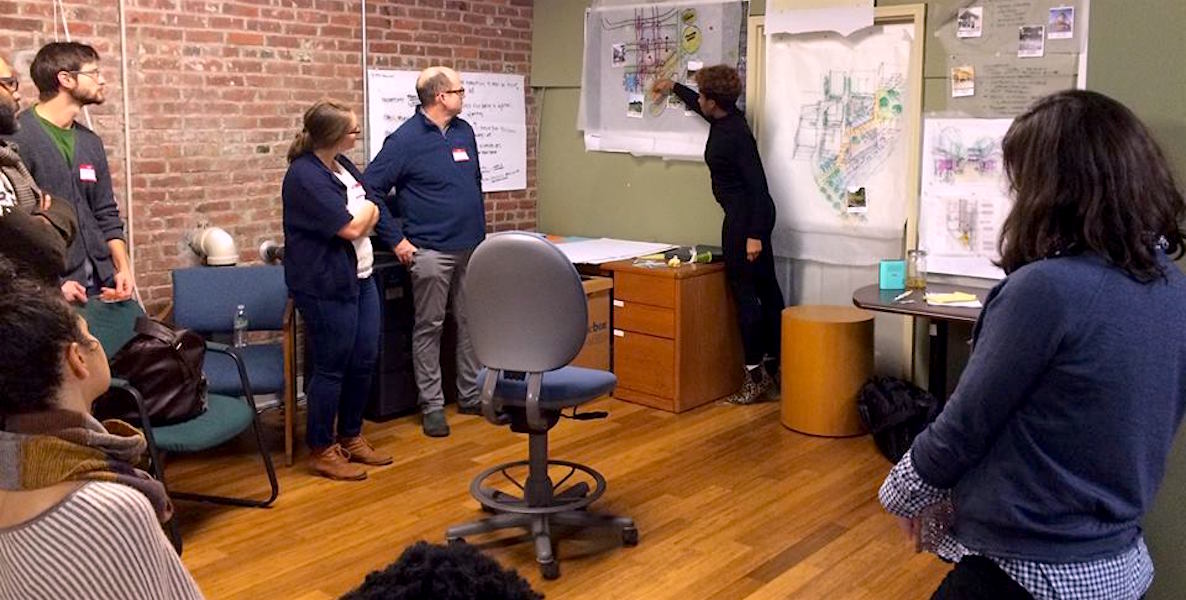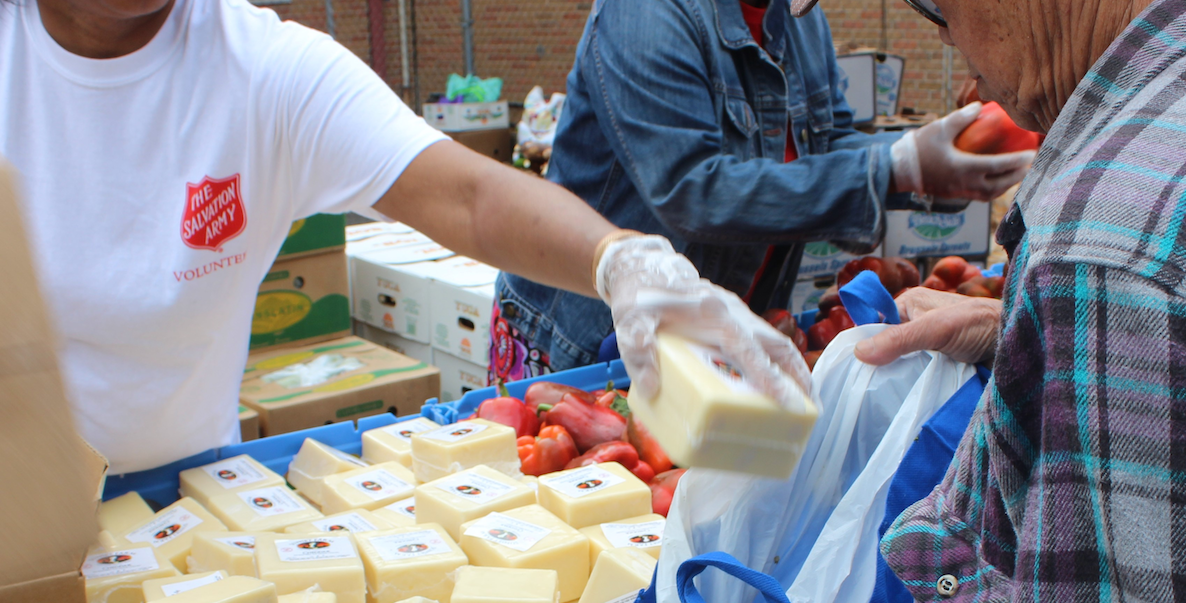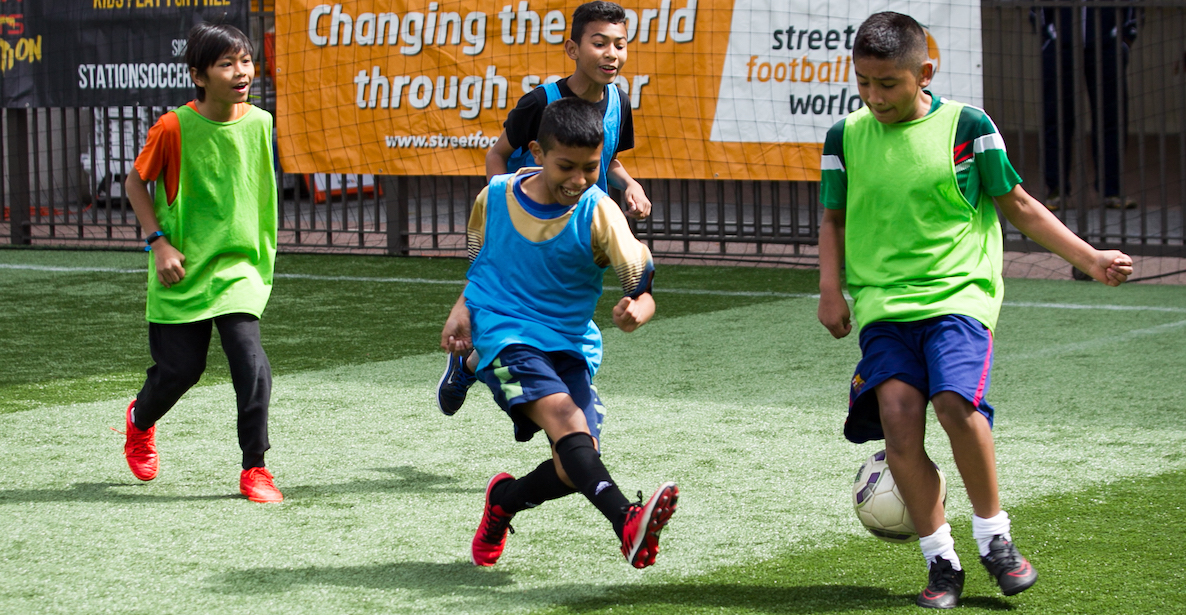In 2013, Sanjay Patel noticed a common theme while riding the train in London during a trip to visit his sister: Groups of kids often rode the train wearing soccer gear. Patel, who had been living in Atlanta, Georgia for nearly two decades, was no stranger to the train; he had been riding it in Atlanta as well, and knew that large, strangely empty tracts of land both in and around the the city’s transit stations were not being used.
He was a board member of Soccer in the Streets, an Atlanta-based nonprofit that provides access to soccer primarily in low-income communities, and had recently learned that the biggest operating cost for the organization was transporting kids amongst the city’s fields. On the London Tube, an idea clicked.
“Why can’t we take some of those unused spaces and build a league?” he thought. “Other people around the world are doing this, and we have the space at the stations to make it work.”
Back in Atlanta, Patel visited train stations solely to look for this unused land, and came to an exciting conclusion—it was everywhere, mostly a result of unused parking lots, as the planners who designed the stations in the 1970s had incorrectly anticipated that transit users would drive, rather than walk, to the stations.
StationSoccer, or something like it, could address two problems in Philadelphia: a similar decline in the use of public transit, as well as a decline in the number of kids playing soccer in the city as families flow to suburban travel leagues.
Patel approached Atlanta’s public transit provider MARTA in 2014 with a 10-station plan in hand that had a radical first step: build a soccer field inside the Five Points train station in the heart of downtown Atlanta. Leadership responded with skeptical curiosity, and asked him to find out where it had been done before so they could evaluate its replicability. “We scoured the planet,” explains Patel, “and couldn’t find it anywhere in the world. I went back to them and said, ‘Well, it would be the first.’”
Patel’s 20 year career in the hotel development field in Atlanta meant he had contacts who understood Soccer in the Streets’ mission and who had confidence in him. Two years later, in October 2016, Soccer in the Streets opened a field on the roof of Five Points, and StationSoccer was born.
![]()
Two additional fields—all of them are approximately 90 to 100 feet long, or a third the size of a standard field—were added at the West End Station in 2018, and the nonprofit and MARTA plan to open fields in or on the grounds of eight more of Atlanta’s train stations by 2021. The goal is to create a transit-oriented league, where kids will ride the train to get to games at the various fields, simultaneously boosting access to the sport and, hopefully, public transit ridership in the city, which has suffered in recent years.
One hundred kids are currently registered to play at the West End Station, and the fields are open during the day for youth and adult pick-up games. Adult leagues pay to use the fields, and the fees go toward keeping the youth programming free. A mini-league of 40 kids currently travel among and use all three fields. MARTA also has its own employee league that uses the fields as part of its health and wellness program. Funding primarily comes from the Arthur M. Blank Family Foundation, with help from the Atlanta United FC Soccer Team as well; both partners also fund Soccer in the Streets more broadly.
Patel is hoping to see the eventual league’s players ride the train for free, whether through subsidization or the help of funders. Currently, health insurance provider AETNA is covering the cost of the mini-league players’ transit passes through a grant for cultivating healthy communities.
This flow of soccer playing to the suburbs of Philadelphia highlights one of Soccer in the Street’s main gripes with the sport: It has become far more expensive to play soccer in America than it needs to be.
StationSoccer, or something like it, could address two problems in Philadelphia: a similar decline in the use of public transit—November of last year showed a 2.4 percent decline in rides from the previous fiscal year, and average weekly bus ridership decreased by 56,000 rides between 2012 and the most recent data from 2016—as well as a decline in the number of kids playing soccer in the city as families flow to suburban travel leagues.
This flow of soccer playing to the suburbs of Philadelphia highlights one of Soccer in the Street’s main gripes with the sport: It has become far more expensive to play soccer in America than it needs to be. “The things about soccer is, all you need is a ball. It shouldn’t cost anything,” Patel explains. “It’s one of those things globally that anyone can play, it’s not about your economic background.”
But in the United States, the often excessive cost of joining a club and traveling from field to field places the sport out of reach for many kids. “In this country, it’s the other way around. Only white middle-class kids tend to play it because there’s a cost associated.”
Soccer in the Streets, which celebrates its 30th anniversary this year and serves nearly 4,500 kids in the Atlanta area, isn’t just about providing access to the game—it’s also about using the game as a medium for showing kids how to be active and healthy. It also offers older kids financial literacy skills, jobs as coaches and refs and other employment skills. “We’re big believers in sport for development,” he explains. “The life skills you learn on the field can be translated to a healthy lifestyle off the field.”
“There are different faces, different languages being spoken, different socioeconomic statuses,” Fowle explains. “She gets out of her neighborhood and into her broader community. She’s actually living in her city.”
The fields and their accompanying bright lighting, donated by the US Soccer Foundation and Musco Lighting, also seem to be leading to a decrease in crime in the areas surrounding them. Patel says community members in the West End have anecdotally reported the virtual disappearance of crime, and Soccer in the Streets has now launched a study to track crime data over the coming years.
Dana Fowle, whose nine-year-old daughter Leo Powell plays Station Soccer, says it has brought her entire family back to utilizing the city’s public transit system, something she did when she first moved to the city before she became so reliant on her car. “Because of it, we are back on the train, and it’s not so confusing for everybody,” she explains. Leo is learning how to navigate the city and public transportation in general, and she’s being exposed to parts of her city she likely would not have visited without StationSoccer.
“She goes to the one on the West End, which is a completely different part of town. There are different faces, different languages being spoken, different socioeconomic statuses,” Fowle explains. “She gets out of her neighborhood and into her broader community. She’s actually living in her city.”
![]()
StationSoccer would not translate to Philadelphia exactly as it is operating in Atlanta; unlike Atlanta, Philly does not have these unused tracts of land among its transit stations. According to Andrew Busch, Chief Press Officer for SEPTA, SEPTA’s infrastructure is a “collection of various former private rail and transit companies that went bankrupt in the mid-1900s.” This means that many stations have been in existence for more than 100 years, and were built before designers had parking lots on their minds.
Philadelphia’s Parks and Recreation Department, though, is considering pursuing a project thematically similar to that of StationSoccer: repurposing unused spaces in rec centers, such as hockey rinks in neighborhoods where hockey has declined in popularity, into mini-pitches, or mini-soccer fields, as one of many ways the city is looking to keep kids playing soccer in Philadelphia, rather than having to travel to the suburbs.
According to Bill Salvatore, Philly’s Parks and Recreation Department’s Unity Cup Director, while the city doesn’t track exact figures, staff has noticed a steady decline in kids engaged in soccer in the city over the past two decades and has spent the past few years brainstorming and designing initiatives—such as Mayor Kenney’s Unity Cup, an adult tournament that organizes teams around country of origin for immigrant players, and the Unity Youth League, an after-school program that mirrors the cup but is for kids ages 6 to 12—to bring them back. He says, though, that they’re always looking for new ways to engage kids with soccer in the city.
“We’re definitely not where we want to be yet,” says Salvatore. “We have engagement meetings planned with soccer clubs to try to figure out how to keep them in the system, give them more opportunities.”
![]()
As a high percentage of the city’s rec centers and parks are accessible by public transit, a version of StationSoccer that utilizes public transit to transport league players among the city’s facilities—providing transport for those who may not have it and easing the lives of soccer parents now accustomed to driving all over the city or going to the suburbs for games—seems plausible. Salvatore says a version of the idea is something that the department might willing to look into.
“As we continue to grow soccer in the city, to keep players in our leagues, it may be a nice partnership to help get players from facility to facility for games and practices,” he says.
Busch says SEPTA staff stay up-to-date on how transit agencies are innovating in other cities and had read about StationSoccer, but knew they didn’t have the land to replicate it here. While the transit organization is open to collaborating with outside agencies and often does, a specific proposal from a collaborator would be necessary before SEPTA could identify how they could get involved. Communication between the parties, though, has not happened as of yet.
According to Patel, collaboration was the most important ingredient in making StationSoccer work in Atlanta. And replication is certainly on Patel’s mind. “Soccer is very much a white middle class sport. The kids we deal with would not usually have access to these programs because of affordability and transportation, they wouldn’t normally have the opportunity to participate,” he says. “Atlanta has one of the biggest income equality gaps in the country. And we could use our program as an example.”
Correction: An earlier version of this story misnamed the company that donated lights to StationSoccer. It is Musco Lighting.
Photo via StationSoccer







